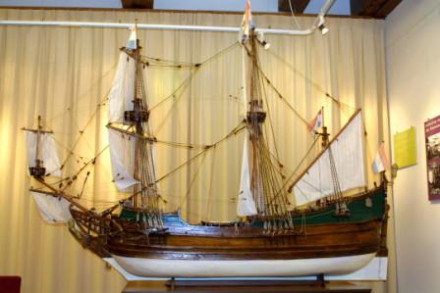History

Description
| Skipper | Schoon, Hendrik |
|---|---|
| Length | 130 Amsterdam feet (36.8 m) |
| Tonnage | 520 ton (260 last) |
Status
The wreck of Risdam was discovered in 1984 by Mike Hatcher and was incredibly well-preserved due to her location encased in the muddy sediment of the beach where she was lost. It has even been claimed to be the best-preserved shipwreck together with the wreck of the Amsterdam. Archaeological research was done in the form of a survey by Jeremy Green, an Australian archaeologist working with the Western Australian Maritime Museum, who later published his findings. During the course of the excavation, storage jars, tin and lead ingots, bricks, porcelain, and ivory were found, some of which have been incorporated into the museum collection at Muzium Negara in Malaysia.
The ship, and not just her cargo, was extremely well preserved when she was found, making her a find of incredible historical value.
References
- relaas schipper Schoon.
NA_1.04.02_2041, scan 723 e.v. - Gegevens VOC-schip Risdam.
- Green, J. (1986).
The Survey of the Flute Risdam (1927), Malaysia.
International Journal of Nautical Archaeology. Vol 15 (2).
pp 93-104. - NA-1.11.01.01-551, Lijst van alle zoodanige Schepen.
- Velde, Paul van der, 1989. The Deshima dagregisters : their original tables of contents : Vol. IV 1710-1720 . - Leiden: Center for the History of European Expansion, 1989. - 217 p., [en].